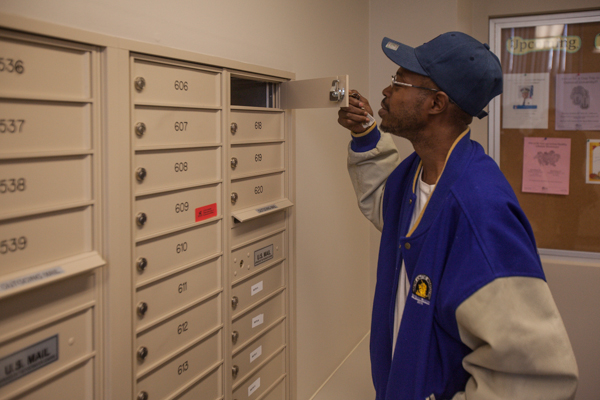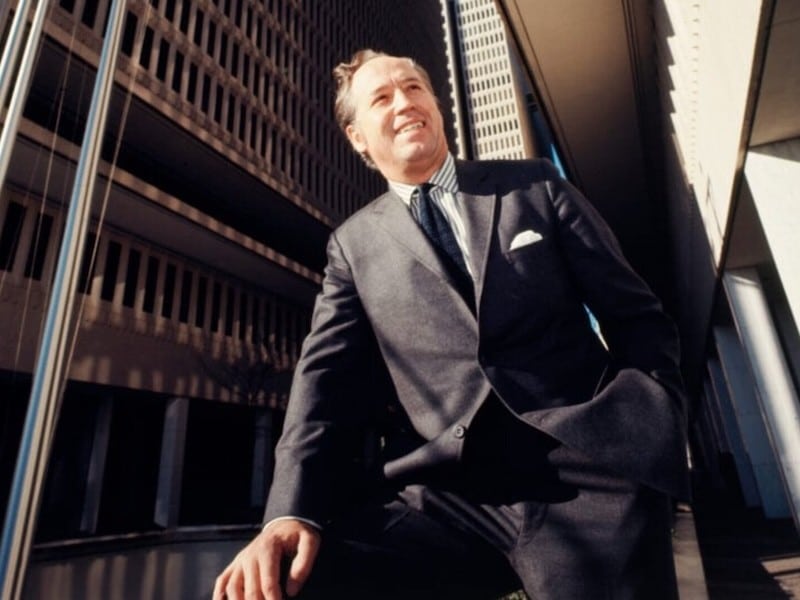Detroit’s NSO building: Architectural gem rebuilt on social responsibility
The art deco high rise, once known by its landmark Yellow Pages sign, anchors the eastern end of Hope Village, where Oakman Boulevard crosses the Lodge. Dennis Archambault reports on how the Neighborhood Services Organization transformed more than just a building.
Perhaps not as ambitious as Dan Gilbert in redeveloping downtown Detroit’s skyscrapers, the Neighborhood Services Organization (NSO) has nonetheless made its own preservationist statement by restoring the Bell Building about five miles up the road.
But the project is less about the building, more about social responsibility. The restored building now provides a home for 155 homeless people and 200 administrative NSO staff.
The high rise, 255,000 square-foot art deco building, once known by the landmark Yellow Pages sign, anchors the eastern end of Hope Village, along Oakman Boulevard in Detroit. It is a building that fosters a proud community within, while helping to build community in the neighborhood. The restored Bell Building was formally dedicated on Oct. 23.
NSO was founded in Detroit in 1955 as a community-based human service agency, “always in reach” by its constituents, but it’s a building that now gives it definition. And it’s a building — a high rise human services building — that helps give definition to Hope Village.
“It is physically symbolic, but to me the story is not the building,” says Michelle Bosau, vice president of fund development and public relations. The $52-million Bell Building project provides permanent, supportive housing. “The story is the people in the building. I have 155 stories in this building. That’s the powerful thing. As beautiful as this is, it’s not to renovate a building. It’s to help these 155 people and whomever comes after them have the most successful life they can.”
At the same time, it’s “a huge opportunity to help shape the future of the organization,” she says. “In a little over two years since I’ve been here we’ve doubled the donors we have.”
Penny C. Thomas began her career working in the building as a copyeditor for the Yellow Pages, the one-time reference tool for “directory assistance” operators when they received requests for phone numbers. Unit director of NSO Life Choices, Thomas is both nostalgic, reflecting on her early professional years and proud of the bold move that her organization took to not only to provide permanent supportive housing for the homeless, but to restore a large, abandoned office building.
When Thomas first heard about the concept, she thought it would be a “Herculean task. I deeply admire Sheilah Clay (NSO president and CEO) and the fact that she had the vision and perseverance to see it through.”
NSO follows the “housing-first” model of serving the homeless, many of whom have substance abuse and psychiatric problems. The model assures that homeless people have a stable place to call their own before administering support services. “I had heard about the housing-first model in New York on NPR,” Thomas says. “As a social worker and as a human being it makes sense.”
She has worked with many homeless substance-addicted parents who’ve lost their children. Thomas says she emphasizes with clients who have lost their children because they don’t have any income or a home — but are expected to resolve their addiction problem before restoring their family. “It’s nearly impossible to do those things. You’re homeless. I’ve talked to people and asked them, ‘Where will you be tomorrow?’ and had young women (say) ‘I don’t know.'”
Now, 155 formerly homeless people have an address — and a mailbox, a place where the rest of their world can connect with them. It’s an emotional moment for many as they open their mailbox and realize the tangible connection. “It gives people the dignity of ‘my own address,'” Bosau says. Thomas adds, “and they get to vote because they now have an address.”
Having NSO staff co-located in the building not only offers symbolic value for both employees and residents, but efficiency for counselors as well. “I like the idea that the service delivery people are located in the same place,” Thomas says. “You don’t have to go anywhere to get the service you might be in need of. The fewer barriers there are to getting the service you need, the more likely you are to avail yourself of it.
“It’s very important, especially for this population. People who have been homeless for a period of time are probably pretty beaten up and disheartened. To get into a place which is now ‘my home, I can control it, I lock the door, I come and go as I choose,’ it’s so empowering.”
Charlie Sears notices it in the friendly competitiveness of the pool room each week, one of the commons areas which allow residents to mix with one another. Sears, a member of the justice and peace committee outreach program of Gesu church in Detroit, plays pool with residents as part of his volunteer service. A source of several volunteers, Gesu was “ground zero” for a creative fundraising project developed by Bosau to outfit the apartments. Sears hosted two parties, one for friends and family and another for his church group. Working with Target stores, NSO invited volunteers to have housewarming parties for future residents by purchasing items needed for the apartments.
“When we devised the idea of housewarming parties, part of the success was depended on going along the old fashioned version of ‘viral.'” Bosau says. About 1,200 new donors responded.
Reflecting on new redevelopment downtown, Sears believes the restoration of the Bell Building is also part of Detroit’s recovery.
“I see this as a model for Detroit’s renaissance — the true renaissance. What’s inevitably going to happen is the money people are going to build their casinos and all their projects to make a buck,” she says. “At the same time, there are grassroots projects all over the city that are not going to be pushed out.”
Dennis Archambault is a Detroit-based freelance writer.
Photos by Marvin Shaouni











